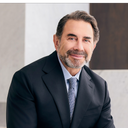it moves towards the right side of my face more, so if you look at my face one way, it's longer and the other way, shorter.
Answers (14)
From board-certified doctors and trusted medical professionals
Dr. Toby Mayer, MD

Dr. Toby Mayer, MD
Board Certified Facial Plastic Surgeon
Answer
Dr. Edward S. Kwak, MD

Dr. Edward S. Kwak, MD
Board Certified Facial Plastic Surgeon
Answer
Dr. Otto Joseph Placik, MD

Dr. Otto Joseph Placik, MD
Board Certified Plastic Surgeon
Answer
Dr. Paul S. Nassif, MD

Dr. Paul S. Nassif, MD
Board Certified Facial Plastic Surgeon
Answer
Dr. Houtan Chaboki, MD

Dr. Houtan Chaboki, MD
Board Certified Facial Plastic Surgeon
Answer
Dr. Richard W. Westreich, MD

Dr. Richard W. Westreich, MD
Board Certified Facial Plastic Surgeon
Answer
Dr. Michael A. Persky, MD

Dr. Michael A. Persky, MD
Facial Plastic Surgeon
Answer
Dr. Paul N. Afrooz, MD
Dr. Paul N. Afrooz, MD
Board Certified Plastic Surgeon
Answer
Dr. William Portuese, MD
Dr. William Portuese, MD
Board Certified Facial Plastic Surgeon
Answer
Dr. Jon F. Harrell, DO, FACS
Dr. Jon F. Harrell, DO, FACS
Board Certified Plastic Surgeon
Answer
More Rhinoplasty Questions
See all Rhinoplasty Q&AWE SEND PRETTY
EMAILS
What’s trending? Who’s turning heads? Which TikTok myths need busting? We’ve got you. No fluff, no gatekeeping—just real talk. Get our free, unfiltered newsletter.